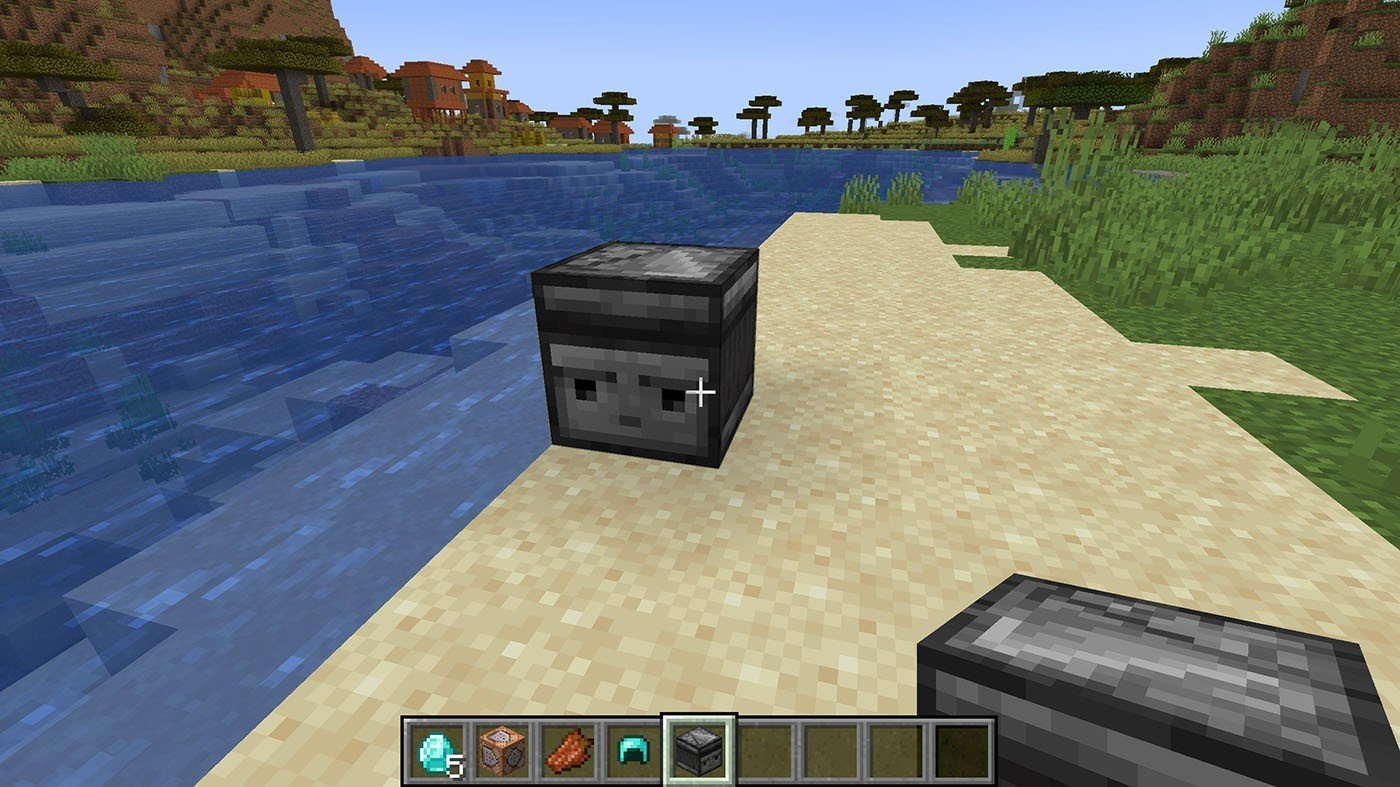Unique ability to track block changes allows for the construction of mechanisms of varying complexity, from automatic farms to alarms.
 Image: ensigame.com
Image: ensigame.com
We will explain how the observer block works, what signals it transmits, and how to use it to optimize your builds. We will also provide usage examples, practical tips, and highlight the nuances that will help players use it effectively.
What is the observer block?
 Image: ensigame.com
Image: ensigame.com
The Minecraft observer tracks changes in the state of neighboring blocks and generates a redstone signal in response. It detects events such as the appearance, removal, or change of objects (e.g., plant growth, water movement, or the opening of trapdoors). The item triggers instantly, creating a brief pulse, making it indispensable for automating processes.
 Image: ensigame.com
Image: ensigame.com
The main purpose of the observer is to simplify and speed up working with redstone circuits. Due to its ability to respond to changes, this item is widely used in automatic farms, timers, alarms, and other mechanisms. It also enables the creation of compact and reliable devices that save resources and simplify world management.
How to craft it
The player will need the following materials:
Read also
 Image: ensigame.com
Image: ensigame.com
Crafting recipe for observer:
- Open the crafting table (3×3 grid).
- Place 3 cobblestones in the top row.
- In the middle row, place cobblestone on the left, quartz in the center, and redstone on the right.
- In the bottom row, place 2 more cobblestones and 1 redstone on the right.
 Image: ensigame.com
Image: ensigame.com
After placing all materials in the correct slots, you will receive the observer. Drag it into your inventory and start using it in your mechanisms.
Uses of the observer
The observer in Minecraft is one of the most useful blocks for automating processes in Minecraft. Its ability to track block state changes makes it a versatile tool in redstone circuits. Here are some popular uses:
🔸 Automating crop farming such as sugarcane, bamboo, or pumpkins. For example, if you direct an observer at a block where sugarcane is growing, it will detect the growth moment and send a signal to a piston that will harvest the crop. This allows you to create fully automated farms that run without player intervention.
 Image: ensigame.com
Image: ensigame.com
🔸 Alarms and traps. The item can be used as a trigger for various alarms. For example, if you place it near a door or chest, it will detect any interaction and send a signal, which can be directed to a sound block or trap. This can help protect resources or simply warn of an intrusion.
🔸 Redstone timers and circuits. If you place two observers facing each other, they will start generating a cyclic signal. This can be used in various mechanisms, such as sending regular pulses to automatic dispensers.
 Image: ensigame.com
Image: ensigame.com
🔸 Compact redstone devices. Due to its small size and quick response, the block is excellent for optimizing circuits. For example, this item can act as a signal source in compact mechanisms like smart doors or automatic furnaces.
If you are wondering how to use an observer in Minecraft, start with these basic examples. The item will open up a lot of possibilities for simplifying and automating gameplay.
Common mistakes and how to avoid them
🛑 Wrong direction: The face of the item must be directed at the block you want to track, with the signal output coming from the back. Always place the block while facing the observed object.
 Image: ensigame.com
Image: ensigame.com
🛑 Short signal: The pulse from the block can be too short for some mechanisms. Use repeaters or signal delays to extend the duration.
🛑 False triggers: it may react to unnecessary changes in surrounding blocks, such as water or growing plants. Isolate its working area to prevent accidental triggers.
🛑 Weak signal strength: The observer only sends a signal to one block. To extend the signal range, add repeaters or amplifiers.
 Image: ensigame.com
Image: ensigame.com
🛑 Conflicts in circuits: Improper connections may cause malfunctions in complex mechanisms. Use redstone torches or blocks to guide the signal.
The observer is a versatile tool for automation, opening up numerous opportunities for creating smart mechanisms. By learning how to use observers in Minecraft, you can automate farms, create complex redstone circuits, and enhance your builds. The key is to consider the direction, isolation of the block, and proper connection to the circuits.
Main image: ensigame.com




















0 comments